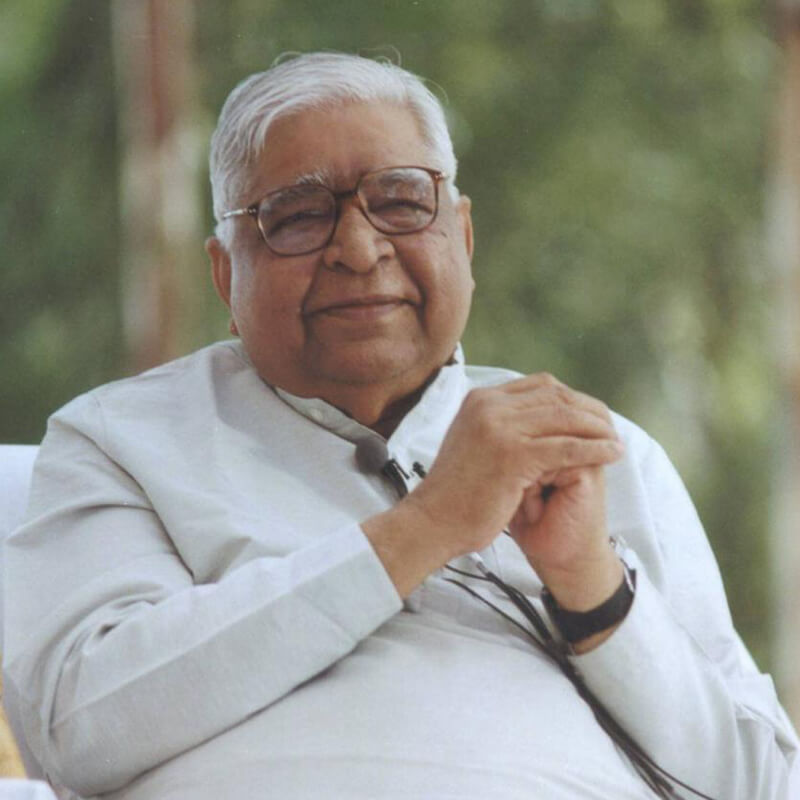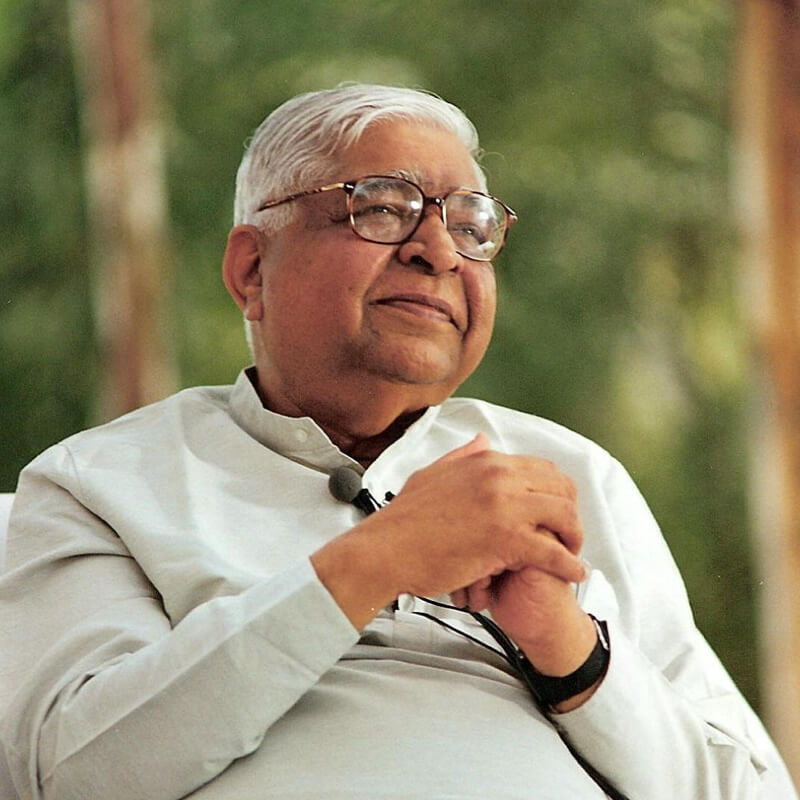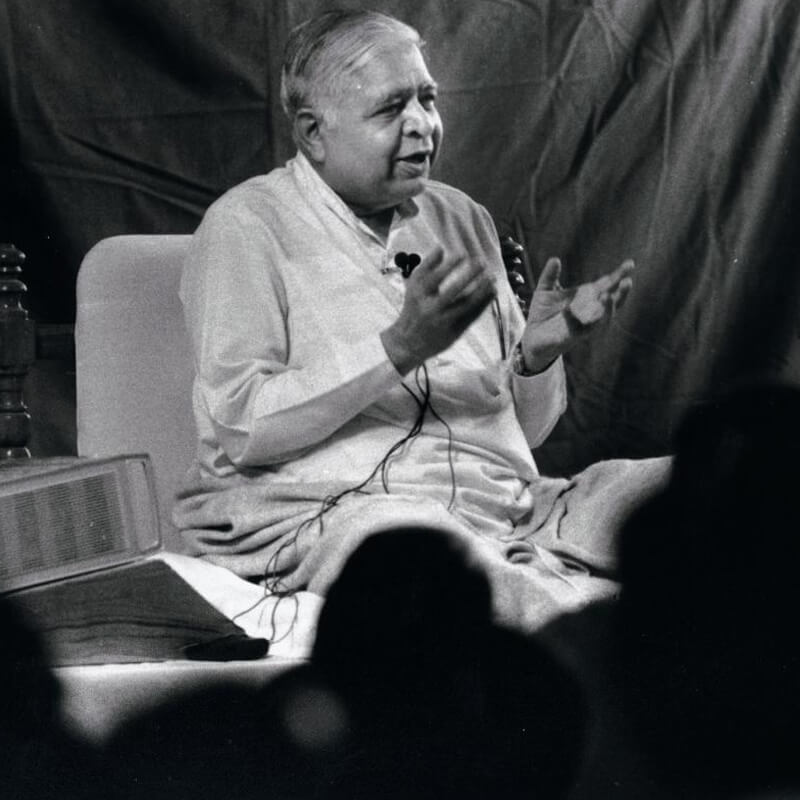(The following has been adapted from the opening talk by Goenkaji at the Vipassana and Ayurveda Conference at Dhamma Giri on 15 October 2005 and discourses given during the 30-day course.)
The Buddha was called a great physician, a great doctor. He was also called a surgeon (sallakatto). It is essential for every physician to develop compassion towards his patients:
A sick person has come to me; I have to cure him. The nationality, religion, race, gender, caste or philosophical belief of the patient is of no importance to the physician; the only thing that matters is that the patient is a human being and is suffering.
Similarly, the patient also does not ask the doctor his religion, caste or philosophical belief-these are irrelevant to the treatment of his illness. Anything that is not related to the illness, the cause of the illness, the eradication of the cause of the illness and the treatment of the illness is irrelevant to the doctor.
Prince Siddhattha Gotama left the household life in search of liberation from all suffering. First, he went to two renowned meditation teachers and learned deep absorption meditation (jhanas) from them. In those days, they were called the seventh and eighth jhanas and were the highest meditation states in those days.
After mastering them, Siddhattha realized that he had not attained the ultimate stage of full liberation. So he continued his search. It was a common belief of those days that liberation can be gained only through torturing the body. He tried the practice of extreme torture of the body but did not achieve anything.
Finally, because of the pāramīs of innumerable past lives, he found the middle path, discovered Vipassana meditation and became fully enlightened.
Then the Buddha taught the Dhamma for the first time to his five companions. This discourse is called the Dhammacakkappavattana Sutta. He rotated the wheel of Dhamma, not the wheel of a particular religion or philosophical belief. He called it Dhamma. Religions, philosophical beliefs, festivals, rites and rituals may be different but Dhamma is always universal.
The Buddha explained the Four Noble Truths:
The First Noble Truth
There is suffering, dukkhā. Suffering starts from birth itself. Birth is suffering; old age is suffering, illness is suffering, death is suffering. Throughout life, undesirable things happen, desirable things do not happen-this is suffering.
The Buddha not only understands that there is suffering but also gains full knowledge of it. Anyone can understand the superficial aspects of suffering but this is not true enlightenment. One has to understand the entire field of suffering at the experiential level.
The knowledge of the first Noble Truth is complete only when its three aspects are accomplished. The first aspect: dukkhā - this is suffering. But this alone did not make him a Buddha.
Then, the second aspect: pariññeyyā - one understands that this truth of misery must be fully understood at the experiential level. The entire field of suffering, the totality of suffering, must be experienced. One can say that the entire field of dukkhā has been experienced only after attaining the first experience of nibbāna.
Even those few moments before nibbāna are moments of dukkhā. The entire field before nibbāna is dukkhā, so the entire field must be explored. Even this did not make him a Buddha.
Then the third aspect of the first truth, pariññātam - one has explored the entire field of dukkhā. Nothing remains unknown to him about dukkhā-pariññāna. The totality of dukkhā is realized - pariññātam.
The Second Noble Truth
What is the cause of suffering? There are many superficial causes: undesirable things happen, desirable things do not happen. There is separation from dear ones and association with unpleasant ones. This is the apparent reality: one feels that one has become miserable because of these undesirable incidents.
But the truth is that the real cause of one's suffering is within and not the result of any external event. So the root cause of suffering has to be uprooted. Only then will one gain true liberation from suffering. So one has to go to the root and understand the real cause of suffering.
It became clear that one becomes miserable if one's desires, cravings, longings are not fulfilled. Further, whatever one has obtained, one worries about how to keep it secure. If it is lost, one becomes miserable. Until the cause of suffering is completely uprooted, one is not free from misery.
Witnessing the truth at the experiential level, one understands that whenever any defilement arises in the mind, misery arises along with that defilement. The defilement and misery arise together. It is impossible for a mental defilement to arise without being accompanied by misery; misery is certain to arise. Understanding this truth at the experiential level, one has to ensure that defilements do not arise at all. When there is no defilement, there is no misery.
Therefore, the second Noble Truth also consists of three parts: first, tanhā - craving is the cause of suffering. Second, pahātabbam - understanding that this cause of suffering should be destroyed. Third, pahīnam - the cause of suffering has been destroyed at the root. If all these three aspects are accomplished, the second Noble Truth is fulfilled.
The Third Noble Truth
The complete cessation of suffering so that it cannot arise again. The first aspect of the third Noble Truth: dukkhā-nirodhā - the eradication of suffering. Secondly, sacchikātabbam - one understands that one has to directly experience the eradication of suffering. Merely accepting the fact that there is a stage free from misery, a stage which is beyond mind and matter, does not help. One has to witness it. Thirdly, sacchikatam - one directly experiences that suffering has been eradicated and cannot arise again. When these three parts are accomplished, the third Noble Truth is accomplished.
The Fourth Noble Truth
What is the way to eradicate all suffering? Merely wishing is not enough, one has to exert effort. First, dukkhā-nirodhā-gāminī patipadā - the path to eradicate all suffering. Secondly, bhāvetabbam - intellectual understanding that every part of the Noble Eightfold Path has to be understood at the experiential level. Thirdly, bhāvitam - one experiences every part of this Noble Eightfold Path; one develops it to the fullest extent.
Thus, when each Noble Truth was fulfilled in three ways and the four Noble Truths were fulfilled in twelve ways, Siddhattha attained perfect enlightenment. He accepted the truth not merely at the intellectual or devotional level but directly experienced it. Only then did he announce I am a Buddha, I am liberated. Anyone who wants to become liberated has to accomplish the three parts of each of these four Noble Truths.
Imesu catūsu ariyasaccesu evam tiparivattam dvādasākāram yathā-bhūtam ñāna-dassanam suvisuddham ahosi.
-By practicing these Four Noble Truths, each in these three aspects, my yathā-bhūtam ñāna-dassanam became pure.
What is yathā-bhūtam ñāna-dassanam? Yathā-bhūtā means whatever is happening now, at this moment. The reality of every Noble Truth; the reality of the First Noble Truth-dukkha-at this moment one is experiencing dukkhā. This is dukkhā. One understands yathā-bhūtā - this is dukkhā. One understands even the most pleasant sensation is dukkhā by dassanā, by observing it objectively. Ñānā: with this experience, wisdom arises. Observing the reality objectively, the wisdom that arises is ñānā, sammā-ñānā. The dassanā becomes sammā-dassanā. Yathā-bhūtam ñāna-dassanam is no longer a philosophy, it has become suvisuddham ahosi. It has become free from all the philosophical beliefs, and bondage, free from the impurities of all kinds of beliefs. It is experienced now. Unless that is done then his teaching will also become a philosophy, a ditthi. The ditthi, should become sammā-ditthi, it should become yathā-bhūtam ñāna-dassanam suvisuddham ahosi. That is his teaching. Simply accepting the teaching of Buddha at the devotional level or at the intellectual level cannot liberate us. It is only the direct experience which will liberate us.
Philosophical beliefs or dogmas are not going to help. However correct a belief may be, if one just depends on one's belief, this alone will not help. One must experience the truth. Direct experience of the truth will make it sammā-ditthi. Otherwise, it will just remain a philosophical belief and every philosophical belief is a bondage. A Buddha becomes a Buddha because he understands how these philosophies create bondage for people. He himself came out of all these bondage and then gave the path, which is free from such bondage. His only goal was to get rid of the suffering of all beings.
Every person has the illness of mental defilements. Each person is afflicted by the illness of ignorantly generating defilements. When one experiences a pleasant sensation, however slight, one develops craving: I want more of it, I want more of it. When one experiences an unpleasant sensation, however slight, one develops aversion: I don't want this, I don't want this. One generates craving for the pleasant and aversion for the unpleasant and loses the balance of the mind, loses equanimity, loses peace of mind and loses happiness. This is the illness.
One is freed from craving, from aversion and from the ignorance of the truth within when one understands the truth - a pleasant sensation has arisen, and simultaneously, craving has arisen in the mind; an unpleasant sensation has arisen, and simultaneously, aversion has arisen in the mind. When one develops this awareness, ignorance is being eradicated.
However pleasant the sensation, it is not eternal; however unpleasant the sensation, it is not eternal. It arises and sooner or later passes away. The entire field of mind and matter is impermanent, transient, inconstant, changing. This is not mere philosophy, it is experiential truth. As long as we are in this impermanent, transient, changing field, we are in the field of suffering. How to go beyond this field?
The Buddha taught the technique to go beyond this field of mind and matter. Every wise energetic person can walk on the path and get liberated from all sorrows. Vipassana, the great meditation technique of India, arises from time to time. It is rediscovered by a perfectly self-enlightened Buddha (sammāsambuddhā) and is again lost after some time. It is rediscovered and lost again and again.
About 2500 years ago, Gotama the Buddha rediscovered the technique of Vipassana and taught it to the people of India. Within 500 years, it was lost in India but fortunately the neighboring country of Myanmar preserved it in its pristine purity. Now, 2500 years after the Buddha, Vipassana has returned to India and intelligent people here have readily accepted it. From India, it has spread throughout the world and people everywhere are accepting it.
Every doctor should practice Vipassana themselves and become proficient in it. Then they will find that their therapy will be very successful, very beneficial, very rewarding.
May all beings be happy!





